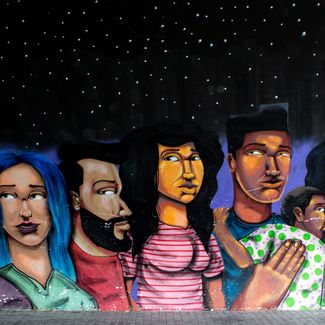
question of the week
Do adland's diversity and inclusivity efforts stack up?
The IPA Agency Census highlights adland's improvements to diversity and inclusivity but we ask whether more could be done
13 March 2023
The IPA's newly-released 2022 Agency Census paints a positive picture of improvements to diversity and inclusivity in adland. It2 revealed that more women and people from non-white backgrounds are making C-suite positions and in greater numbers than previous years. But gender and ethnicity pay gaps still remain, particularly in creative and other non-media agencies, despite decreasing from 2021.
Commenting on the report Paul Bainsfair, director general, IPA said: “These latest results represent a much healthier pace of improvement than in previous years and demonstrate that our concerted collective efforts to improve diversity and inclusivity within our industry are beginning to pay off."
But is enough being done? And how can more focus be placed on areas of fair pay, equal opportunity and creating inclusive, flexible workplace cultures?
We spoke to a number of industry leaders to find out their thoughts.
Nicky Bullard, group chief creative officer, MullenLowe
We’re still invisible.
Look closely and at the very bottom of the IPA’s very own summary about the survey findings. The last sentence reads,
6.5 per cent of employees are aged 50+, which remains unchanged year-on-year.
Yep, one of the most important findings about one of the most discriminated groups in our industry is, ironically, almost invisible.
Whilst there are some big headlines in the latest IPA survey, and as many have put it, it’s looking positive, it’s really not if you are over 50.
As we pat ourselves on the back for making progress in the industry, that industry continues to get younger. Again, madness when the population with the all the cash gets older. And you’d think our focus would be on making sure we were talking to those older people in authentic and informed ways ie having some people with actual lived experience feeding into the process….
And this isn’t just a retention story. According to Centre for Ageing Better, the over 50s have suffered more than any other group with re-employment post Covid.
So what next?
If the industry won’t fight for us to become visible, we will have to do it ourselves.
Bring it on.
For those of us who are not male, white, or straight, we’ve got used to fighting over the years.
Sufia Hussain, inclusion equity & diversity director, EMEA, Wunderman Thompson
The 2022 IPA Agency Census shows fantastic progress in representation across all measured metrics. It shows that a strong vision combined with concrete actionable steps make a real difference. What needs to happen next is a further deepening and understanding of traditionally under-represented and marginalised talent. Are they in the right place? Are they adequately rewarded? Are they over-qualified for the roles they’re in and if so, why? How can we better recognise the additional layer of competency brought to the role by such talent through access to new types of clients, networks, and suppliers? A cultural shift is underway, and it is to be celebrated. But we cannot stop here, there is so much more to do.
Matt Foster, director of DEI, Ogilvy UK
I think we can feel optimistic about the IPA Census as they do indicate, from a quantitative data perspective, that our industry is moving in the right direction when it comes to representation. This reflects the impact of our efforts at Ogilvy UK to create equitable conditions that recognise and celebrate difference, with better representation as an outcome. The Census however does not capture a qualitative sense of whether people in our industry feel they belong, and this is also critical.
Gender and ethnicity pay gaps remain, and they are not acceptable, but neither is it reasonable to expect these challenges to be solved overnight. The barriers to progress the industry faces are macro in nature and originate in wider society and are entrenched in culture. Dismantling their impact on the workplace takes time, strategic thinking and innovation. More focus can only be placed on improving the situation if organisations truly understand that diversity, equity and inclusion should be operationalised and integrated at every level of the business. It’s not a fluffy nice to have, but a measurable imperative that clients are looking for in their agencies, and at Ogilvy UK our focus and investment in DEI continues to increase.
Kate Williams, head of DEI, Publicis Groupe UK
It’s important that we celebrate the successes and positive progress but we can’t afford to become complacent and lose the momentum that we’ve gathered over the past two years – the industry is a long way from meeting national or London levels of representation. It's critical we maintain our commitment to driving positive change. The numbers don’t tell us everything, we need to better understand the experiences that people who have historically been under-represented, are having in our industry. Who is the industry improving for? How are they feeling about the progress? Can they really feel the difference? We need to keep listening and learning. We’re still leaving some communities behind and we need to be wary of just focusing on our talent pipelines to make our numbers better, without making the culture changes we need to truly get to a ‘culture add’ space. It's brilliant to see improved figures but we need to continue to work hard to ensure we're setting people up for success and not revisiting harms on marginalised communities.
Rethinking our ways of working, in partnership with our clients, will be vital in future-proofing our industry and achieving meaningful change.








